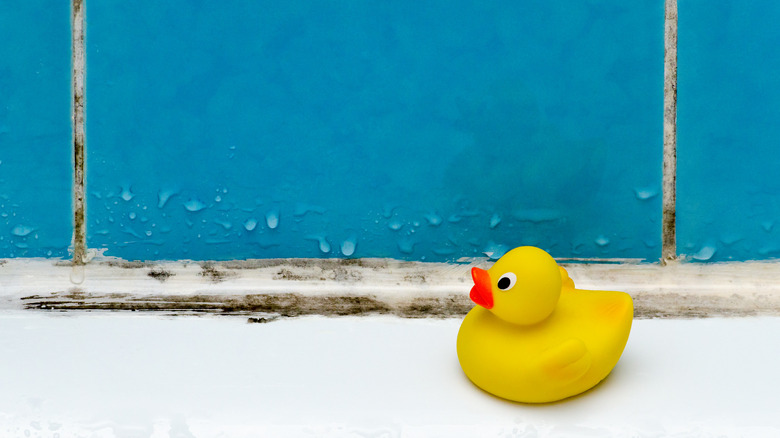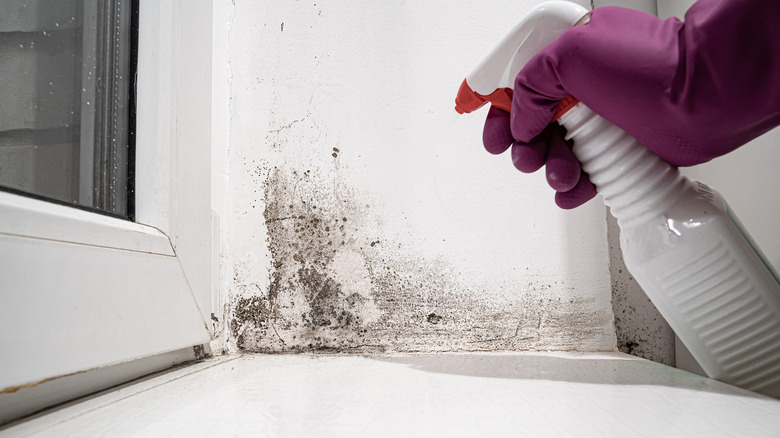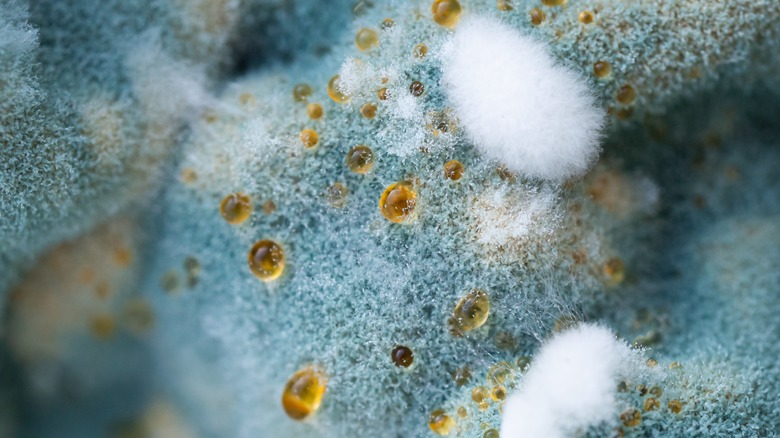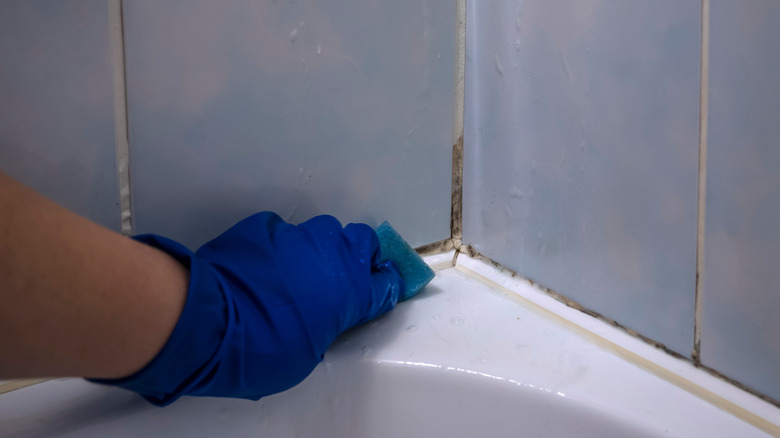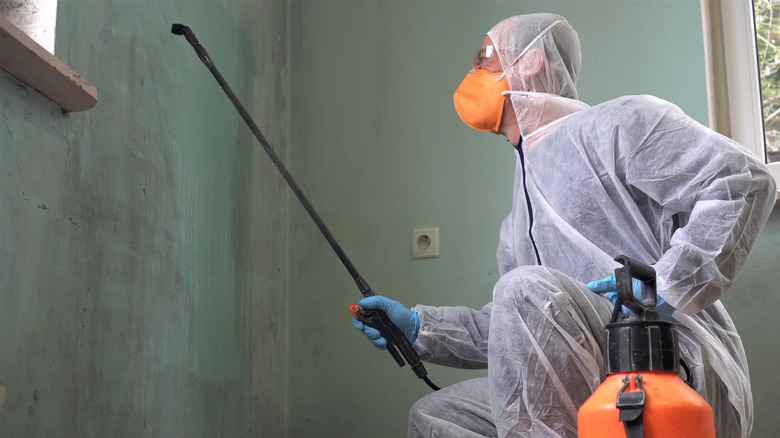Mold Vs Mildew: What's Growing In Your Bathroom
We may receive a commission on purchases made from links.
Maybe you've noticed a little something icky in the corner of your shower or taken out a load of laundry with a funky odor and been unsure if it's the machine or your clothes that stink. When you see growth or catch a whiff of something foul, you're sure to wonder whether you're dealing with mold or mildew. While both are similar in that they are unwanted fungi, says Bob Vila, there are some key differences that are important to know before you strap your cleaning equipment on and go at it.
Mildew is actually a type of mold, but cleaning and removing the two organisms have two totally different requirements, and approaching either without this knowledge can put you at risk. This guide will walk you through how to identify whether you have a mold or mildew problem and how to address these fungal invaders from your shower, kitchen cupboards, basement, and household appliances.
Telling mold and mildew apart by appearance
When you're inspecting that unsightly fungal growth in your home, there are some key physical appearance traits that help to differentiate mold from mildew. These can be sorted into a few categories: color, profile, and size.
Mold tends to have a higher profile, while mildew is typically flat and flush with the wall. You can easily mistake either for regular debris or dust, but mold holds deeper hues and ranges from deep shades of red, green, and black. If you've ever had to throw out a piece of bread due to a green furry growth on it, you've seen mold in action. Mildew, however, looks more like small specks of white-grey powder, as noted by The Spruce. If left untreated, mildew will take on a deep brown hue that will look like speckles of soil. Mold is typically more likely to cause lasting structural damage, whereas mildew tends to only affect cosmetics.
Both mold and mildew are born out of mold spores, but knowing these key differences can help you to keep your family safe.
Is mold more dangerous than mildew?
One of the most significant differences between mold and mildew is their hazard to health. Neither are safe to have in your household and should be dealt with swiftly and aggressively, but mold is far more dangerous to you and your family's health.
Mildew is still a fungus that develops from mold spores, but its effects on health are much more limited. If left untreated, mildew can have negative health effects similar to being exposed to allergens, including respiratory issues, headaches, and sinus congestion, according to House Method. These effects should not be taken lightly, especially if you have immunocompromised members of your family. Mold, on the other hand, can have some really nasty health effects, including chest tightness, skin irritation, and lung infections. If you notice mold in your household, you should recognize it as a serious health hazard and treat it accordingly.
How to clean mildew
You should always use the utmost care when treating any form of mold, even if it's a milder form like mildew. You should wear protective gear such as a mask and gloves and always have a fan going and/or windows open so you can have proper ventilation. Even natural cleaning products, such as vinegar, are dangerous to inhale, so take your safety seriously and do not clean in an enclosed space.
Mildew can be tackled with regular household cleaners that you probably already have. Instagram cleaning influencer @GoCleanCo recommends going straight for the hard stuff — bleach, paired with a scrubbing brush. However, many cleaning experts like Restoration Master opt for vinegar due to its ability to penetrate porous surfaces. Because mildew tends to grow flat and wide rather than burrowed into a surface like mold, you typically won't need a professional to help with its removal. To avoid mildew from reappearing in appliances, be sure to leave your dishwasher and washing machine doors open whenever they aren't being actively used.
How to clean and remove mold
While we often use mold as a catch-all term, mold is still a fungi type, and there is a wide variety of molds, even your household variety. This is important to know, as different mold types have different protocols for safe cleaning and removal. While some mold can be cleaned and removed on your own, some types, such as stachybotrys chartarum, also known as black mold, should be identified, treated, and removed by a professional if it is on a porous surface such as carpet or drywall, says Mold Answers.
If you do decide to tackle mold on non-porous surfaces like tile or glass, be sure to wear extensive protective gear, including goggles, gloves, and a face mask. One natural alternative to bleach is Benefect Decon 30 disinfectant, which is EPA List N registered. No matter what product you choose, always be sure to read labels and test new products on a small part of your affected area to avoid damage.
